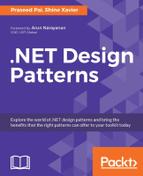Design patterns have always fascinated software developers, yet true knowledge of their applicability and consequences has eluded many. The various solutions that have been created and applied to solve similar problems have been studied over time by experienced developers and architects. A movement slowly began to catalog such time-tested and successful solutions, which served as a blueprint for software design. The applicability of design patterns exhibited maturity (even though over-engineering was a perceived risk) in solution architecture (in terms of stability, consistency, maintainability, and extensibility), and became a core skill for serious developers and architects. In this introduction to patterns and pattern catalogs, the authors wish to provide a detailed illustration of the movement in the software development industry that led to the discovery and consolidation of the various patterns and pattern catalogs. It is equally important to understand the evolution of patterns, idioms, programming languages, and standards that led to standardization of these technology-agnostic blueprints, which form the basis of enterprise application development today. We will cover the following topics in this regard:
- History of object-oriented programming (OOP) techniques, idioms, and patterns
- Patterns and pattern movement
- Key patterns and pattern catalogs
- Key C# language features that facilitate implementation of OOP techniques, idioms, and patterns
OOP is a programming model that is supposed to combine structure (data) and behavior (methods) to deliver software functionality. This was a marked contrast from the procedural programming model, which was mostly in vogue when the OOP model gained prominence. The primary unit of composition in a procedural programming model is a procedure (mostly a function with side-effects). Data is fed into a series of procedures that constitutes the process or algorithm in a solution context. In the case of OOP, the data and related functions are represented together as a class, which acts as a fundamental unit in the programming model. Schematically it is as follows:
Class Test
{
<------ Static (Class Level) Variables --------------->
<------ Instance (Object Level) Variables ------------>
<------ Private Methods ------------------------------>
<------ Public Methods ------------------------------->
}
As a programmer, one can create many instances of a class during the execution of a program. Since class encapsulates data and its associated operations to provide a coherent entity, the problems (or rather side-effects) associated with global variables/data (being used as payload for the procedures) went away all of a sudden. This helped to manage the complexity of developing large software.
OOP revolutionized the way programmers modeled the problem domain, with class compositions leveraging encapsulation, association, inheritance, and polymorphism. Additionally, with the flexibility to model hierarchies (that closely represent the problem domain) with ease, it became natural for developers to think in terms of objects.
Note
The origin of OOP can be traced back to the Simula programming language created by Kristen Nygaard and Ole-Johan Dahl, released in the year 1965. The advent of the Smalltalk system helped the ideas of OOP to percolate to the academia and some consulting circles. Smalltalk was a dynamically typed language, and primarily designed as a message passing system. Later, they added Simula's class-based Object model. Alan Kay, Dan Inaglis, and Adele Goldberg at Xerox PARC designed the language.
The OOP model reached a critical mass in the early 1990s, with the popularity of the C++ programming language. Even though Smalltalk and C++ were OOP languages, Smalltalk was a dynamically typed programming language, and C++ was a statically typed (though weakly enforced) programming language. The C++ programming language was created by Bjarne Stroustrup at the AT&T Bell Laboratories, as an extension of C (for wider adoption). In this regard, C++, as a programming language, has issues in terms of usage because of the compulsion to make it C-compatible. The story of evolution of the language is well chronicled in, The Design and Evolution of C++, a book written by Bjarne himself. The book deals with the rationale of designing the language and the design choices available for him to incorporate features such as single inheritance, multiple inheritance, virtual methods, exception handling, templates (Generics), I/O streams, and so on. Any serious C++ developer should not miss this particular book, as it helps to understand the reason why the C++ programming language is the way it is!
There were attempts to make protocol-based development using middleware technologies like Microsoft's Component Object Model (COM) and OMG's Common Object Request Broker Architecture (CORBA). Both CORBA and COM were very similar, and both facilitated object interoperability at the binary level. Each protocol had its own binary encoding format, and interoperability between these two standards became a problem. Some enterprising companies made a living by writing COM/CORBA bridge to rectify this problem. Also, COM was mostly available only on Microsoft Windows, making it a platform-specific solution.
Then, in 1996, Sun Microsystems came up with a language which was marketed as a programming language to write applications that are hosted in a browser (Applets). They named it Java. However, due to performance and political reasons, applet development did not took off. The language, along with its associated platform, was soon projected as a server-side programming system. This was a tremendous success, and the Java language made a strong comeback, further popularizing the OOP programming model. The primary architect of the Java language was James Gosling.
In the year 2001, Microsoft released C#, a brand new OOP language for their new virtual machine development platform, known as .NET. Later, Microsoft did add support for generics, lambda, dynamic typing, and LINQ, among others, to make C# one of the most powerful programming languages in the world. The primary architect of the language was Anders Hejlsberg.
Meanwhile, languages such as Ruby and Python made an appearance, and are still relevant in certain areas. Then, there were object-functional languages such as F#, Scala, Groovy, Clojure, and so on. However, the OOP model is symbolized by C++, C#, and Java.
